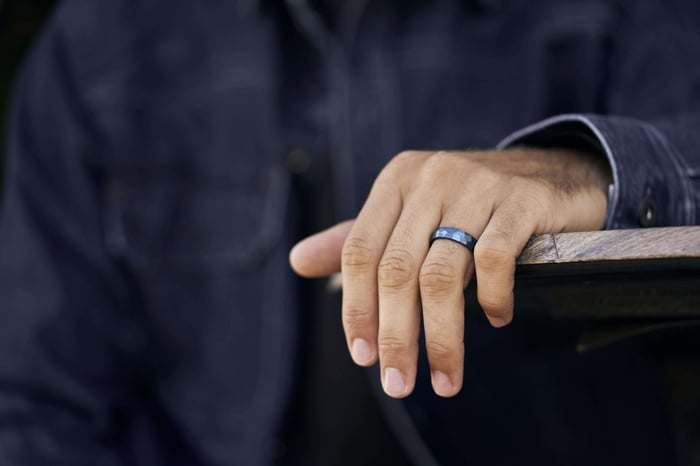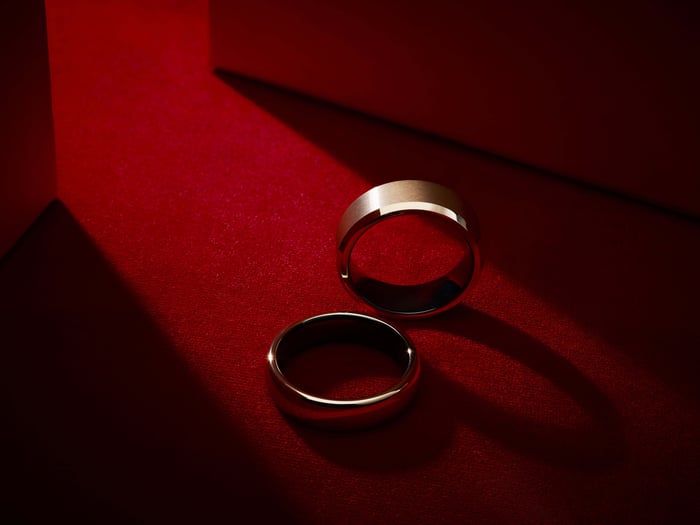
Wedding rings and bands have carried deep symbolism throughout history, representing love, commitment, and eternity.
From ancient beliefs to modern cultural traditions, they hold a timeless significance in marking one of life’s most cherished milestones.
Today, online shopping has changed how we choose these symbols of union, offering a variety of designs and materials. But with the wide variety comes confusion—particularly about the difference between wedding bands and wedding rings.
In this article, we will explore the historical roots of these pieces, their cultural significance, and the key differences in design, symbolism, and practicality. You’ll also find tips for choosing the right option and how to combine bands and rings for a personalized touch.
The Historical Context of Wedding Rings
Wedding rings hold a story as old as love itself.
Their origins trace back to ancient Egypt, where rings symbolized eternity with their circular design.
When the Romans adopted the tradition, wedding rings became more standardized. These early pieces of jewelry often worn on the left ring finger, used materials like iron, symbolizing strength and durability, though wealthier Romans favored gold for its enduring value.
What is a Wedding Ring?
Wedding rings have evolved far beyond their ancient roots, reflecting the styles and values of different eras and cultures.
In medieval Europe, popular metals like yellow gold and silver along with gemstones became popular, turning rings into a display of wealth and social standing. Rings often featured intricate designs and even inscriptions to personalize them.
Fast forward to the modern era, and popular culture continues to influence wedding ring styles.
What is a Wedding Band?
Wedding bands offer a simpler approach to expressing love and unity.
Their origins lie in clean, unembellished designs, symbolizing the purity and strength of marriage. Over time, modern designs have expanded to include subtle details like engravings or small diamonds, making them versatile for every taste.
While traditionally worn alone, wedding bands are now often paired with engagement rings or stacked to celebrate milestones like anniversaries.
Modern wedding band trends include:
Classic simplicity: Smooth, unadorned bands for timeless appeal.
Contemporary styles: Bands with diamonds, textured finishes, or unique metals.
Practicality: Durable materials like tungsten offer sleek, everyday wear.
Religious and Cultural Significance
Wedding rings and bands carry profound meanings in religious and cultural practices.
For Christians, the exchange of rings during a ceremony signifies eternal love and commitment. Jewish weddings often use plain, unadorned bands to focus on the purity of the relationship.
In Hindu traditions, traditional wedding jewelry can extend beyond rings to necklaces or bangles, reflecting the cultural importance of marriage. Similarly, some African cultures use intricate beadwork or unique materials to craft rings with personal significance.
Cultural and religious perspectives on wedding rings include:
Christianity: Rings symbolize eternal love, often exchanged with blessings.
Judaism: Plain bands focus on the simplicity and purity of marriage.
Hinduism: Rings may be part of a broader array of marital jewelry.
Global diversity: Local materials and traditions shape ring designs worldwide.
Whether you're choosing a simple women’s or men’s ring or unique style preference to reflect your heritage, these traditions can bring added meaning to your decision.
Core Differences Between Wedding Bands and Wedding Rings
Though the terms are often used interchangeably, wedding bands and wedding rings differ in subtle but meaningful ways.
Understanding these distinctions can help you choose the option that best suits your style, lifestyle, and budget.
Design and Aesthetics
Wedding rings tend to feature intricate designs, often incorporating gemstones or custom elements.
These rings are as much a statement piece as they are a symbol of love, with styles ranging from solitaire diamonds to intricate vintage patterns.
In contrast, wedding bands are known for their minimalist appeal. Traditionally, these plain metal bands now include modern touches like textured finishes, engraving, or even small gemstones.
Wedding rings: Designed to stand out with bold details and decorative elements.
Wedding bands: Focus on simplicity and understated elegance.
Function and Wearability
Wedding rings often represent the engagement or proposal, making them a symbol of the promise of marriage. These rings can be ornate and delicate, which sometimes makes them less practical for daily wear.
On the other hand, wedding bands are celebrated for their practicality and simple design. Their smooth, unadorned design makes them ideal for everyday activities without the risk of snagging or damage.
Wedding rings: Often worn alongside a band and reserved for special occasions.
Wedding bands: Durable and designed for comfortable, daily wear.
Symbolic Differences
Engagement rings, which are sometimes mistaken for wedding rings, symbolize the promise of marriage. They are typically given during the proposal, serving as a prelude to the wedding day ceremony.
Wedding bands, however, are exchanged during the ceremony itself. They represent the union and commitment shared between partners, solidifying the promise made with the engagement ring.
Cost Implications
Wedding rings often come with a higher price tag due to their detailed designs, precious metals, use of precious stones, and intricate craftsmanship.
Factors such as carat weight, gemstone type, and metal quality all contribute to their cost.
Wedding bands, being simpler in design, are generally more affordable. The material, additional detailing, and any embedded stones can still influence their price, but they tend to be a more budget-friendly option.
Whether you’re exploring options like tungsten rings for their durability or elegant diamond bands, understanding these differences can help you make an informed choice.

How to Choose the Right Option for You
Selecting between a wedding band and a wedding ring comes down to personal preference and practicality.
Start by considering your lifestyle, daily activities, and personal style to determine which option fits best.
Key factors to consider:
Personal style: Choose a design that reflects your taste, whether it’s the ornate detailing of a wedding ring or the minimalist elegance of a band.
Comfort: Think about the fit and weight. If you lead an active lifestyle, a simple, durable band might be more suitable.
Daily activities: If you work with their hands on a daily basis, a simpler design is a popular choice and can offer longevity without compromising style.
Shopping tips for a better experience:
Explore virtual fittings to see how different designs will look on your hand.
Use online tools like our size chart to find the perfect fit without stepping into a store.
Compare materials and styles across platforms to find the best match for your needs.
Combining Wedding Bands and Rings
One trend is to pair wedding bands with engagement rings for a layered and personalized look.
This wedding ring stack approach allows you to mix different styles, metals, or gemstones to create a unique set.
Popular stacking options include:
Anniversary bands: Often gifted for milestones, a beautiful anniversary band can complement your existing set with added meaning.
Eternity bands: Featuring stones all around, these symbolize an everlasting bond and make a stunning addition to your ring collection.
Combining bands and diamond rings not only elevates the aesthetic but also tells a richer story of your relationship.

Begin Your Married Journey With the Right Choice
Choosing between a wedding band, wedding ring, or even a combination of both is a personal decision.
These timeless symbols have represented love and commitment for centuries, and the choice you make should reflect your style, comfort, and the story you want to tell.
Wedding rings often showcase intricate design elements, while bands bring a minimalist and practical elegance to the table. Combining the two allows for personalization, creating a meaningful set that evolves with your relationship.
Ridge offers a range of options to help you find the perfect piece. From durable men’s wedding bands to classic groom rings, our collection is crafted to suit every style and need. Start your journey with a thoughtful choice that will last a lifetime.
FAQs
What is a good price to pay for a wedding ring?
The average cost of a wedding ring varies widely based on the materials, gemstones, and design. For a simple band, you can expect to pay around $300 to $1,000, while rings with diamonds or custom designs can range from $1,500 to $5,000 or more. Ultimately, the "good price" depends on your budget and the value you place on the ring's symbolism.
How many months before the wedding should I buy rings?
It’s best to purchase your wedding rings about three to four months before the wedding. This allows enough time for sizing, engraving, or any personal touches you may want. If you’re shopping online, consider factoring in potential shipping times or adjustments.
Is it essential for the wedding band and engagement ring to match?
No, your wedding band and engagement ring don’t have to match. Many couples opt for complementary styles rather than identical ones. You can mix metals, designs, or even add unique touches to make the combination more personal. The key is choosing pieces that feel meaningful to you.
Do both partners need to have matching wedding bands?
Not at all. While some couples prefer matching bands as a symbol of unity, others choose different designs to reflect their individual styles. Whether you go for matching bands or personalize each one, what matters most is that both rings are special symbols of your commitment and taste.






































